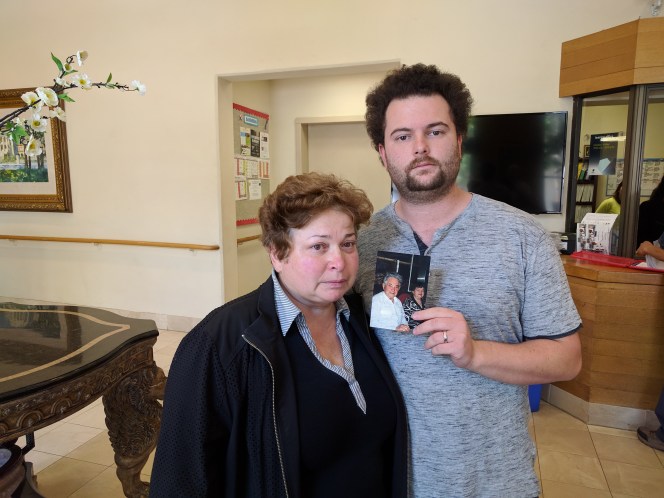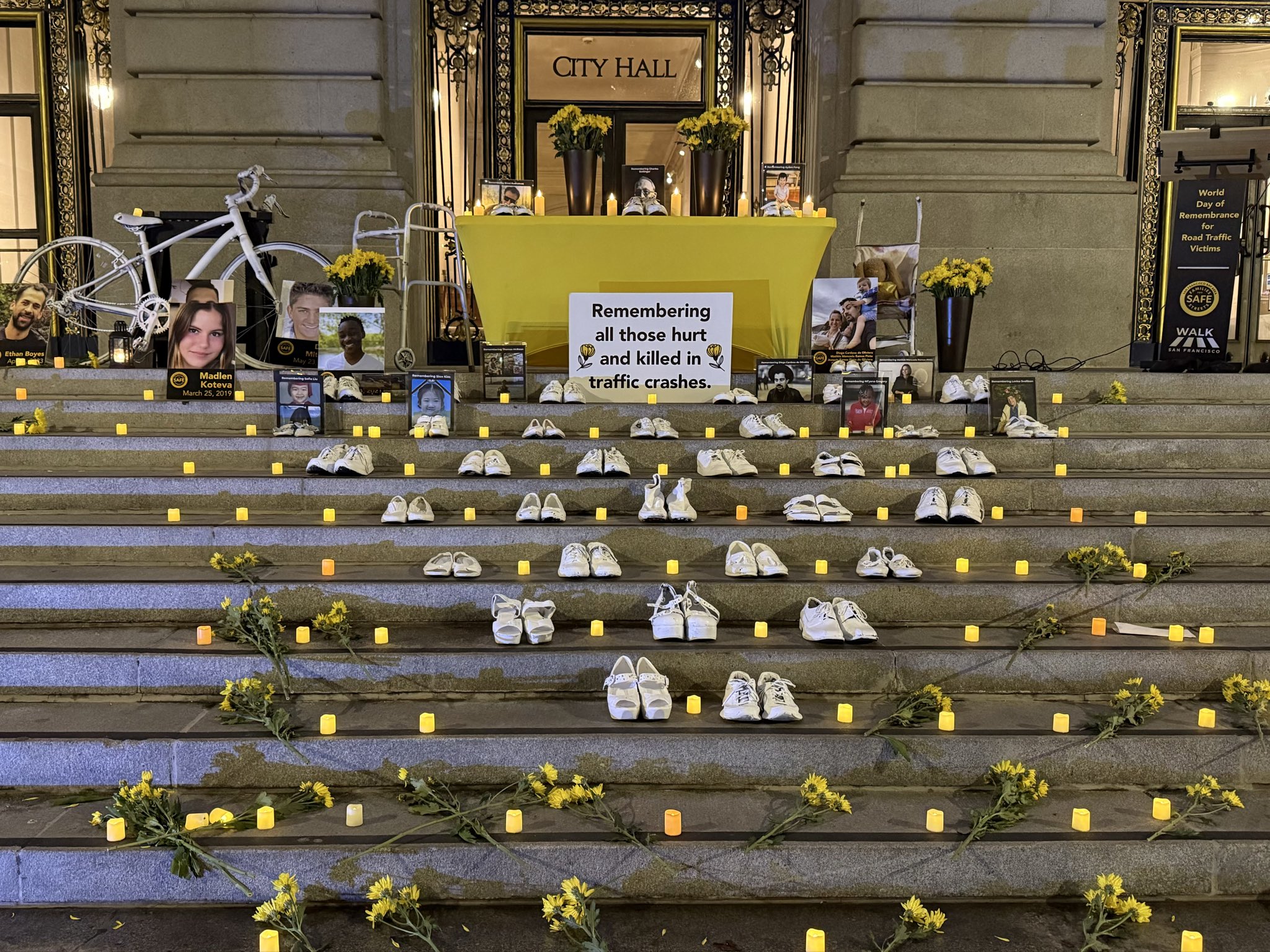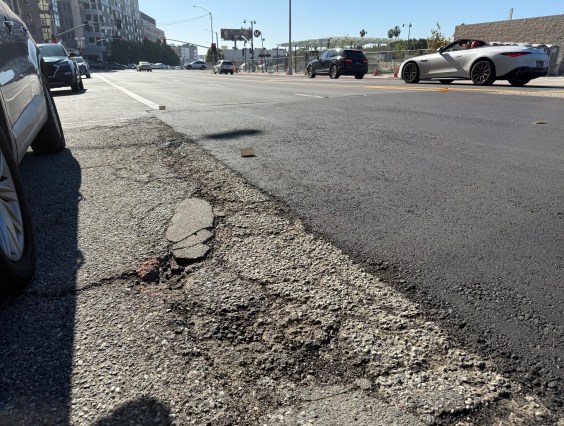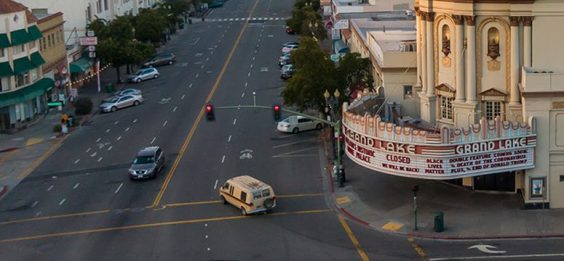David Grinberg, 90, was crossing Fell Street at Baker, returning to his home at the Mercy Terrace Apartments, a senior facility, yesterday around 5:20 p.m. He was struck by a motorist and died of his injuries later that evening.
"He crossed every day to get to the park," said Roman Grinberg, the victim's grandson, who came to the Mercy Terrace building with his mother to watch a security camera video of the intersection in order to find out what happened. Mercy asked Streetsblog to hold off watching the video until the family was given a chance to view it and grieve. According to a spokeswoman for the facility who had seen it, Grinberg was apparently in the crosswalk when he was struck by a motorist heading west on Fell. This is consistent with a story in SF Weekly, which cites witness testimony via Twitter:
Walk SF's interim executive director, Cathy DeLuca, was horrified by this latest incident, which comes on the heels of two other pedestrian fatalities.
From the Walk SF release:
Walk SF, the Vision Zero Coalition, and the entire community is saddened and outraged to learn that another person walking was killed on October 4... David’s death follows on the heels of two other recent pedestrian deaths – that of Gus Vardakastanis on September 22 and Winifred Leshane on September 15. That makes three pedestrians who have been killed on city streets in less than three weeks.
How many more people have to die before we realize that we can put an end to these preventable crashes?
Walk SF also stressed that Fell and that section of Baker are "streets that the City has identified as high-injury corridors, the 13 percent of city streets that account for 75 percent of severe and fatal crashes."
Streetsblog reached out to SFMTA to find out if any safety improvement, such as bulb outs, are planned for the Fell and Baker intersection. The agency has not yet replied, but the most recent information on the web page goes back to 2013 and concerns adding posts to the bike lane. It's unclear if any further improvements are coming. That said, readers will recall that there's an ongoing fight between two neighborhood groups over extending the protected bike lane on Fell down the Panhandle, which would narrow crossing distances. If done correctly, it would also be an opportunity to add a pedestrian refuge island, between the car space and the bike space, so senior citizens have a place to pause as they cross the street.
"I don't know why there aren't any bulb outs, especially with all the seniors," said Rob Miller, who lives on Fell across Baker Street from Mercy Terrace. "It's not safe," said Raisia Solodkin, 94, who knew Grinberg and also lives at Mercy Terrace. "Put in some signs, like the kind they have at schools, to get people to slow down. 153 old people live here and drivers must slow down."
Indeed, as Streetsblog watched, it was difficult to find a car that seemed to be following Fell's posted 30 mph speed limit. Several pushed the yellow light. A few were still blowing through the intersection when it turned red. This, of course, is a typical situation on a wide street that seems designed to encourage speeding.
"I know that intersection--it's very popular for people entering the park," said Pi Ra, a director with the advocacy group, Senior and Disability Action. "Because of the width of the street, people tend to drive really fast through there and there isn't enough crossing time for seniors."
Indeed, the countdown timer only goes for 12 seconds, which is hardly enough time for a senior to get across such a wide intersection. SFMTA needs to re-time this crossing immediately and then place planters or temporary barriers to narrow the intersection until permanent bulbouts can be installed.
But more than anything, the Mayor needs to show the leadership he expressed in August of 2016, when he ordered SFMTA to install three protected bike lanes within a few short months of the deaths of Heather Miller and Kate Slattery. Too many pedestrians are getting killed at our intersections. And as the SF Weekly points out, seniors are getting killed more than any other group. So the Mayor can start with Fell and the crossings around Mercy and order SFMTA to make those intersections safer without delay, followed by any other intersection near a senior center or school.
Because this latest death was not an outlier. It was the direct result of bad road design that prioritizes speed over life and limb.
And as a result of this known and entirely preventable hazard, San Francisco's streets have claimed yet another victim. "He just had his dinner," said Grinberg's daughter Inessa, fighting through tears. "He just stepped out to go to the park."






